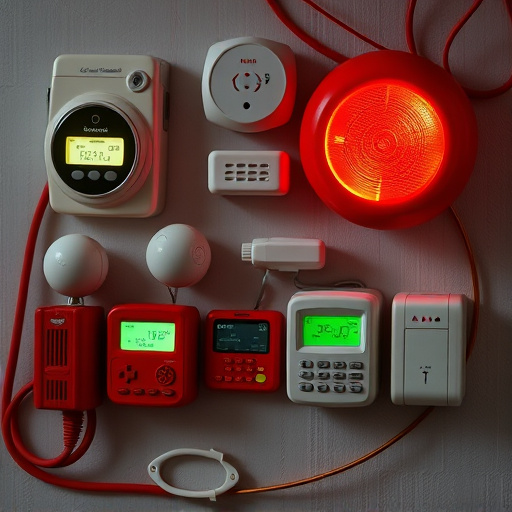Lone workers in remote industries face increased risk of isolation and emergency situations. Maximum decibel personal alarms (105-120dB) are crucial safety tools, cutting through noise to signal distress quickly. Features include durable design, long battery life, GPS tracking, and real-time monitoring. Implement these systems with comprehensive training for optimal lone worker protection, as demonstrated by successful deployments in forestry and construction. Prioritize high decibel alarms, proper training, and regular testing for maximum safety effectiveness.
Lone workers, often isolated in remote locations or high-risk environments, face unique challenges. Understanding the risks associated with their work is paramount for ensuring safety. This article delves into the critical role of maximum decibel personal alarms (MDPA) as a key component of effective safety alert systems. We explore essential features, implementation strategies, and real-world success stories, providing best practices for optimal use of MDPA to mitigate risks and enhance worker protection.
- Understanding the Risks of Lone Worker Isolation
- The Role of Maximum Decibel Personal Alarms in Safety
- Key Features to Consider for Effective Alarm Systems
- Implementation and Training Strategies for Optimal Use
- Real-World Success Stories and Best Practices
Understanding the Risks of Lone Worker Isolation
Lone workers, by definition, operate independently and may find themselves in isolated or remote locations. This isolation can significantly amplify risks, as immediate assistance is often unavailable. Without a safety net, even minor incidents like slips and falls, equipment malfunctions, or unexpected encounters can become life-threatening. The maximum decibel personal alarm serves as a critical safety measure for these workers, ensuring they have a means to signal distress quickly and effectively.
The ability of a personal alarm to emit sounds at high decibels is essential in overcoming the challenges posed by isolation. A loud alarm can attract attention, alert nearby colleagues or emergency services, and potentially deter harmful situations. In critical industries where lone workers are prevalent, such as construction, agriculture, and forestry, deploying personal alarms with maximum decibel outputs becomes a non-negotiable safety protocol.
The Role of Maximum Decibel Personal Alarms in Safety
In the realm of lone worker safety, maximum decibel personal alarms play a pivotal role in ensuring swift attention and response during emergencies. These devices are designed to be highly effective in alerting colleagues or emergency services when a worker encounters distress, especially in environments where communication might be limited or impossible. The primary function of these alarms is to break through background noise, whether it’s the hustle and bustle of a construction site or the constant hum of machinery in an industrial facility, to ensure that help arrives promptly.
Maximum decibel personal alarms are game-changers when it comes to lone worker safety. Their loud and consistent signal acts as a reliable testament to the worker’s location and immediate need for assistance. This is particularly crucial in remote or labyrinthine settings where regular communication channels might not be readily accessible. By using these alarms, workers can confidently know that their distress signals will reverberate through the environment, fostering a culture of safety and quick response.
Key Features to Consider for Effective Alarm Systems
When selecting an alarm system for lone workers, several key features ensure maximum effectiveness and safety. One of the most critical aspects is decibel level. High-decibel personal alarms, typically ranging from 105 to 120 decibels, are essential to cut through ambient noise and alert individuals quickly. This loudness can be a lifesaver in emergencies. Additionally, consider systems with multiple activation methods, such as pull chords, buttons, or automatic fall detection, allowing workers to initiate an alarm effortlessly.
Other important features include durable design for rugged conditions, long battery life, and robust connectivity options like GPS tracking. Some advanced systems offer real-time monitoring and alerting to designated contacts or control centers, enabling swift response. Remember, the ideal alarm system should be user-friendly, reliable, and designed to withstand the unique challenges faced by lone workers in various environments.
Implementation and Training Strategies for Optimal Use
Implementing safety alert systems for lone workers requires a strategic approach that combines robust technology with comprehensive training. Start by selecting devices designed for maximum decibel levels, ensuring they’re easily accessible and visible. Personal alarm safety features should include immediate alert capabilities, GPS tracking, and durable construction to withstand various work environments.
Training programs must educate employees on the system’s functionality, response protocols, and self-care measures. Simulated scenarios can help them understand when and how to activate alerts. Regular refreshers and updates are crucial to keep everyone engaged and prepared. Emphasize the importance of personal responsibility in addition to device usage for optimal safety outcomes.
Real-World Success Stories and Best Practices
In recent years, numerous organizations have successfully implemented maximum decibel personal alarm safety systems for lone workers, leading to significant improvements in worker security and response times. These real-world success stories highlight the effectiveness of employing high-decibel alarms that can be readily heard over ambient noise, even in challenging environments. For instance, a forestry service in Europe adopted such a system, allowing employees working in remote areas to quickly alert colleagues or emergency services in case of an accident or distressing situation.
Best practices for effective deployment include ensuring proper training for all lone workers on the use and maintenance of personal alarms. Regular testing and calibration are essential to guarantee maximum decibel output and reliable operation. Additionally, integrating these alarms with existing communication systems enables two-way messaging, enhancing overall situational awareness. Organizations should also consider geographical variations in noise levels when selecting alarm devices, ensuring they meet industry standards for audibility in diverse environments.
Lone workers face unique challenges, but with the right safety alert systems, we can ensure their well-being. The role of maximum decibel personal alarms cannot be overstated in mitigating risks. By considering key features, implementing effective strategies, and learning from real-world success stories, organizations can foster a safer environment for these essential workers. Investing in robust alarm systems is a proactive step towards preventing accidents and saving lives.
